#syrian war report 2018
Explore tagged Tumblr posts
Text

Stunning Greek Mosaics Uncovered in Syria
A rare and stunning mosaic panel depicting Greek scenes has recently been uncovered in the Homs province of Syria. Experts say it dates back to the Roman era.
Syrian state news agency SANA reported that archeologists unearthed the sizeable mosaic panel constructed 1,600 years ago in the city of al-Rastan, adding that “the panel has no parallel in the world”.
The Syrian Directorate of Antiquities noted that it was found in an area previously held by the opposition forces of Syria.
Dr. Humam Saad, director of excavation studies and the archaeological mission in al-Rastan, said that the discovery actually took place in 2018. But the Syrian opposition forces who controlled the Homs province meant that archeologists could not uncover it earlier.
However, with the return of Bashar Assad’s regime forces, archaeologists finally received access. This allowed them to reveal the mosaic, which has a length of 20 meters and a width of 6 meters.

Archaeologists still believe there is a possibility of finding more remains under the mosaic.
Unearthed Mosaic depicts two main Greek Scenes
The uncovered Mosaic features two main scenes. One depicts soldiers carrying swords with shields seen with the names of Greek leaders who took part in the Trojan War. The war was a legendary conflict between the ancient Greeks and the people of Troy more than 2,000 years ago.
The second is a portrayal of Neptune(Greek Poseidon), the Ancient Roman/Greek god of the sea, and 40 of his mistresses.
Around the 12th century BC when the rift between the ancient Greeks and the people of Troy began, the Trojan prince Paris abducted Helen, wife of king Menelaus of Sparta.
When Menelaus demanded her return, the Trojans refused. In turn, Menelaus persuaded his brother Agamemnon to lead an army against Troy.
The Greeks ravaged Troy’s surrounding cities and countryside for nine years. The city held out nonetheless, being well-fortified and commanded by Hector and other sons of the royal household.
On the 10th and final year of war, the Greeks had the brilliant idea to build a large hollow wooden horse and hide a select force of men inside. The Greeks pretended to sail away, and the Trojans pulled the horse into their city as a victory trophy. In this manner, they entered the city of Troy and won the war.
A long-held argument about whether the battle actually took place is still raging. Nevertheless, there is enough evidence indicating its truth. Unfortunately, however, no one has ever found the giant wooden horse.
The reality of the battle now justifies all the stories spread about the war. This includes the tale of Achilles. The great ancient Greek warrior was invulnerable because his mother dipped him in the River Styx while a child. Yet according to ancient Greek mythology, he was left vulnerable at the part of the body by which she held him; his left heel.

Greek Mosaic in Syria “complete and rarest of its kind”
Dr. Saad said “It is not the oldest of its kind, but it’s the most complete and the rarest,”
“We have no similar mosaic,” referring to the significance and uniqueness of the unearthed mosaic.
He also told the press that “What is in front of us is a discovery that is rare on a global scale.” Furthermore, he stated, the images are “rich in details, and includes scenes from the Trojan War between the Greeks and Trojans”.
In Ancient Greek and Roman mythology, the Greek demigod hero Hercules slayed Hippolyta, queen of the Amazons, in one of his 12 labours. That finding apparently connects with history.
Saad further added, “We can’t identify the type of the building, whether it’s a public bathhouse or something else, because we have not finished excavating yet.”
Prior to the armed conflict in Syria, there had not been significant excavation efforts in the city of al-Rastan, despite its historical significance in the country, Saad said.
He added that “Unfortunately, there were armed groups that tried to sell the mosaic at one point in 2017 and listed it on social media platforms.”
By James Ssengendo.

#Stunning Greek Mosaics Uncovered in Syria#Homs province of Syria#city of al-Rastan#mosaics#ancient artifacts#archeology#archeolgst#history#history news#ancient history#ancient culture#ancient civilizations#roman history#roman empire#roman art#greek art
99 notes
·
View notes
Text
The U.S. president has significant latitude to use military force even in the absence of congressional authorization and even when such action would violate international law. Through its military interventions in the Middle East since Oct. 7, 2023, the Biden administration has both further eroded the existing guardrails constraining presidential war powers and possibly bequeathed a new conflict with the Houthis to his successor.
Despite President-elect Donald Trump’s oft-deployed slogan of “no new wars” and claims that United States was at peace during his first administration, Washington both engaged in new conflicts and expanded and intensified existing ones without fresh congressional authorization under this leadership between 2017 and 2021.
Trump’s first four years in the White House revealed a commander in chief who, while erratic, had certain tendencies with respect to the use of military force. Due in part to his transactional nature, Trump was generally skeptical of large-scale U.S. military presence overseas and the value of U.S. alliances and partnerships. He was prone to one-upmanship with respect to U.S. military action—launching attacks in part because prior presidents had refrained from them.
Given the wide freedom of action afforded the commander in chief and the might of the U.S. military, decisions by the incoming president on the use of force could be globally consequential. In light of those stakes, it is worth revisiting Trump’s track record on the use of military force during his first term in office.
When Trump took office in 2017, he inherited a narrowly focused U.S. military mission in the complicated battle space of the Syrian civil war. Despite broader policy objectives, his immediate predecessor, President Barack Obama, had limited direct military force in Syria to fight the Islamic State, rejecting calls from his advisors to attack Bashar al-Assad and enforce the administration’s self-imposed “red line” on chemical weapon use.
Despite a monthslong review of the Obama administration’s campaign plan to fight the Islamic State, the Trump administration’s most notable initial shift was redubbing “ISIL” to “ISIS.” Although the destruction of the Islamic State’s physical “caliphate” and the killing of its leader Abu Bakr al-Baghdadi ultimately occurred on Trump’s watch in 2019, mostly his administration continued Obama’s counterterrorism playbook.
However, Trump had cause to revisit Obama’s red line early in the administration when Assad’s forces launched a deadly sarin attack on Khan Shaykhun in 2017, killing dozens of civilians, including children. According to two of Trump’s children, Trump decided to strike in retaliation after seeing images of Syrian children fatally poisoned. Trump’s statements also suggested that he wished to one-up Obama, critiquing his predecessor for failing to enforce the red line.
Yet, Trump’s original retaliation plan wasn’t implemented. According to reporter Bob Woodward and later partially confirmed by Trump, Trump called Defense Secretary Jim Mattis seemingly to demand the assassination of Assad, shouting, “Let’s fucking kill him! Let’s go in. Let’s kill the fucking lot of them.”
Woodward reports that Mattis told his subordinates, “We’re not going to do any of that. We’re going to be much more measured.” (Trump has denied this account of events.) And so, the U.S. retaliation was more measured, consisting of airstrikes on the Shayrat airbase, which was allegedly used to conduct the fatal sarin attack.
Although Trump was enthusiastic about killing terrorists, he had an aversion to anything he perceived as nation-building and was deeply skeptical of large-scale troop deployments. These sentiments contributed to his precipitous decision in December 2018 while on a phone call with Turkish President Recep Tayyip Erdogan—to withdraw all U.S. forces from Syria. The sudden move led to the Mattis’s resignation.
Despite Trump’s announcement, U.S. forces remained in Syria as officials in his administration walked back the decision of total withdrawal. This was partly due to Trump’s intermittent focus on the matter and the separate, more ambitious Syria agendas of his underlings, some of whom were more interested in using U.S. troops to counter Iran rather than the Islamic State. Later, in October 2019, Trump did in fact partially pull back US troops in northern Syria at the urging of Turkey.
Trump was also convinced by officials within his administration and members of Congress to retain some U.S. forces in Syria to “keep the oil.” These advocates appealed to Trump’s long-stated desire for concrete material benefit from U.S. military deployments. The reality that “keeping the oil” was both impractical and illegal did not matter.
Trump’s policy shift on Iran was more dramatic. Obama left office having constrained Iran’s nuclear program through a painstakingly crafted multilateral agreement while Tehran’s paramilitary proxies in Iraq observed a wary truce with U.S. forces as they both fought the Islamic State.
After firing many of the supposed adults in the room in his administration, Trump pulled out of the Iran nuclear deal and reimposed sanctions to apply “maximum pressure.” These actions upended a tense modus vivendi in Iraq. With Tehran no longer restraining them, Iran-backed paramilitary groups based in Iraq resumed attacks on U.S. forces in 2018.
Even so, Trump was not eager to engage in a major conflict with Iran. After the Iranian downing of a U.S. drone over the Persian Gulf in 2019, Trump ultimately refrained from the retaliatory attack advocated by his hawkish advisors—reportedly due to cautionary counsel from Tucker Carlson. Trump also refrained from attacking Iran in response to Iranian missile strikes on oil facilities in Saudi Arabia. Despite publicly blaming Tehran for the September 2019 attack, Trump announced he would “like to avoid” conflict with Iran and indicated interest in a new nuclear deal with the Islamic Republic.
Yet, the Iran hawks surrounding Trump ultimately convinced him to take significant and provocative military action against Iran. According to reporting by Jack Murphy and Zach Dorfman, officials such as then-CIA Director Mike Pompeo began planning to kill Iranian Gen. Qassem Suleimani as early as 2017. Continuing attacks on U.S. personnel in Iraq from Iran-backed forces in late 2019 provided justification; he was ultimately killed in January 2020.
What exactly Trump’s advisors told him about the likely Iranian response to Suleimani’s killing is unclear. But he does not seem to have expected the retaliatory ballistic missile barrage that Iran unleashed on U.S. troops in Iraq. Certainly, he sought to immediately downplay the attack in an effort to de-escalate with Iran—tweeting out “all is well” following the strikes. Trump has continued to minimize the injuries to U.S. troops—more than 100 service members with traumatic brain injuries—as headaches. Indeed, Pentagon officials were reportedly concerned that awarding Purple Hearts to wounded troops would undermine Trump’s narrative.
Such predictable Iranian retaliation was the reason that both the Bush and Obama administrations had refrained from killing Suleimani.
The Trump administration, Iran hawks in Congress, and the commentariat have subsequently tried to cast Suleimani’s killing as “restoring deterrence” vis-a-vis Iran. Such spin obscures not only Iran’s immediate ballistic missile attack on U.S. troops, but also further attacks on U.S. forces in Iraq by Iran-backed groups during the remainder of Trump’s term, some of which resulted in U.S. fatalities.
In Yemen, the Obama administration gave Trump a counterterrorism campaign against al Qaeda in the Arabian Peninsula (AQAP) and a conflict with Houthi militants in which the United States was not directly fighting (apart from a single strike on Houthi radar facility in late 2016).
Still, the United States was providing essential arms, maintenance, and spare parts for the ruinous bombing campaign waged by a Saudi Arabia-led military coalition. The coalition’s penchant for using U.S. weapons to bomb Yemeni civilians—and its failure to improve targeting over 18 months—led the outgoing president to suspend precision-guided munition transfers to Saudi Arabia after its warplanes bombed a funeral in Sanaa, killing more than 100 civilians.
Among Trump’s very first military actions as commander in chief was greenlighting a rare and risky commando raid against AQAP in Yemen that the outgoing Obama administration had forgone. The U.S. assault alongside forces from the United Arab Emirates resulted in numerous civilian casualties—including children—and the death of a U.S. Navy SEAL.
Trump also promptly reversed Obama’s lame-duck arms sales suspension. While he had little interest in direct U.S. military engagement in the Saudi-Houthi conflict, Trump was all too eager to sell weapons to Riyadh.
Although his administration would later seek assurances from Saudi Arabia that it would use U.S. weapons consistent with the law of war, the desire to sell weapons overshadowed accountability. After Saudi Arabia used U.S.-supplied precision-guided munitions to attack a school bus full of Yemeni children in 2018, Trump characterized the strike as a “horror show” and candidly admitted that the Saudis “didn’t know how to use the weapon.”
When the State Department’s inspector general investigated U.S. arms sales to Saudi Arabia and the Department’s efforts to limit civilian casualties, Trump fired the inspector general and the Department later suppressed the investigation’s full results.
There is no crystal ball to predict how Trump will wield his power as commander-in-chief. The degree of Trump’s personal involvement in policy, who he chooses to listen to, and the willingness or ability of his team to temper outlandish proposals are among the many sources of uncertainty.
Nonetheless, his record from 2017 to 2021 and subsequent statements—particularly following the 2024 election—could offer a preview of his agenda as commander in chief.
Trump is no dove, and he is fond of issuing blustery military threats. (His recent comments regarding potential military action with respect to Greenland and Panama appear to be mostly trolling and bluster—for now.) And though such threats alone may harm U.S. interests, he has often lacked follow through, and it seems he would avoid intentionally involving the United States in a major armed conflict. Indeed, he may again seek to remove U.S. forces from conflicts in Syria, Somalia, and potentially Iraq.
Yet, Trump’s instincts should provide only limited comfort to those concerned about further U.S. wars. His willingness to escalate U.S. bombing campaigns in Somalia and Afghanistan before moving to withdraw U.S. forces could provide a template for how he will handle the conflict with the Houthis he may inherit. His track record with enabling Saudi Arabia’s military campaign in Yemen suggests that he is happy to fuel other countries’ wars, no matter how they are waged.
And, as with the Suleimani strike, Trump may act heedlessly without fully appreciating the consequences of his actions—particularly if encouraged by his advisors. In this respect, Trump’s musings during his first term about missile strikes on Mexican drug cartels are particularly worrying.
By casting doubts on whether the United States would come to the defense of allies and partners, Trump may encourage adventurism by revisionist rivals as well as nuclear hedging by countries such as South Korea, which may decide that it is time for a level of self-reliance they have not previously considered necessary.
Trump’s boosters sometimes laud his unpredictability as a virtue that keeps foreign adversaries off balance and deterred. Whether it is a virtue or not, the commander in chief of the world’s most powerful military will again be unpredictable and likely even less constrained than he was during his first term given the weak guardrails on use of force by the U.S. president.
6 notes
·
View notes
Text
Japan's Public Security Intelligence Agency removes Turkey's PKK and Palestine's HAMAS from "List of Global Terrorist and Armed Organizations"
by Hiroyuki Aoyama, Professor
Tokyo University of Foreign Studies
November 29, 2023
Originally posted on Yahoo!News:
Translated/Post-edited using DeepL.com
On November 28, Turkey's Haber 7, Yeni Yasam, and Harwar News (ANHA) - which is close to the Democratic Unity Party (PYD), a Syrian Kurdish nationalist organization - all reported that Japan's Public Security Intelligence Agency had removed the Kurdistan Workers' Party (PKK) from "List of Global Terrorist and Armed Organizations" section on its official website.
トルコのハベル7、イェニ・ヤシャム、シリアのクルド民族主義組織の民主統一党(PYD)に近いハーワール・ニュース(ANHA)などは11月28日、日本の公安調査庁が公式サイト内の「世界のテロ・武装組織等」欄から、クルディスタン労働者党(PKK)を削除したと一斉に伝えた。
The PKK is an organization that Turkey considers a separatist terrorist organization. The Syrian PYD is a descendant of this organization.
PKKは、トルコが分離主義テロリストとみなす組織。シリアのPYDはこの組織の系譜を組む。
In addition to Turkey, the PKK has also been designated by the United States as an FTO (Foreign Terrorist Organization) on October 8, 1997. The U.S. CIA updated The World Factbook on its official website on January 24, 2018, equating the Syrian PYD with the PKK and designating the organization and its then co-leader, Salih Muslim, as a terrorist organization, a description that was removed shortly after (refer to my book, "膠着するシリア:トランプ政権は何をもたらしたか" (Stalemate in Syria: What Has the Trump Administration Brought?), Tokyo University of Foreign Studies Press, 2021)
PKKは、トルコのほかにも、米国がFTO(外国テロ組織)に指定(1997年10月8日)している。米国はCIAが2018年1月24日に、公式サイト内の「ワールド・ファクトブック」(The World Factbook)を更新し、シリアのPYDをPKKと同一視して、同組織と当時の共同党首だったサーリフ・ムスリムをテロリストに指定したが、この記載はほどなく削除された(拙稿『膠着するシリア:トランプ政権は何をもたらしたか』東京外国語大学出版会、2021年)。
The People's Defenders of the Armed Forces (YPG), an armed group founded by the PYD, constitutes the main force of the Syrian Democratic Forces (SDF), which was formed in Syria in October 2015 at the behest of the United States. The SDF is positioned one of the "partner forces" of the U.S.-led coalition of the willing (the Combined Joint Task Force - Operation Inherent Resolve (CJTF-OIR)), which claims to be continuing the "war on terror" against the Islamic State and is fully supported by the United States.
PYDが創設した武装組織の人民防衛隊(YPG)は、2015年10月にシリアで米国の肝いりで結成されたシリア民主軍の主力部隊を構成している。このシリア民主軍はイスラーム国に対する「テロとの戦い」を継続していると主張する米主導の有志連合(「生来の決意」作戦合���任務部隊(CJTF-OIR(Combined Joint Task Force – Operation Inherent Resolve))の「協力部隊」(partner forces)と位置づけられており、米国の全面支援を受けている。
On the other hand, Turkey has taken the position that the PKK, PYD, YPG, and SDF are nothing more than terrorists "flipping names on the billboard" and constantly criticizes the United States for fully supporting the SDF while designating the PKK as an FTO.
一方、トルコは、PKK、PYD、YPG、シリア民主軍がテロリストによる「看板の架け替え」に過ぎないとの立場をとっており、PKKをFTOに指定する一方で、シリア民主軍を全面支援する米国を常に批判している。
Japan's Public Security Intelligence Agency removed the PKK from the "Global Terrorist, Armed Organizations, etc." section of its official website on November 27 [2023].
日本の公安調査庁が公式サイトの「世界のテロ・武装組織等」欄からPKKを削除したのは11月27日。
Regarding this, Haber 7 reported that PKK supporters had recently been dancing Kurdish folk dances to PKK propaganda songs in Japan, and then reprinted an X (formerly Twitter) post (dated November 24) by economic reporter Takaaki Ishii, who criticized their activities.

これに関して、Haber 7は、PKK支持者らが最近になって、日本国内でPKKのプロパガンダ・ソングに合わせてクルド人の民俗舞踊を踊るなどしていたと伝えたうえで、その活動を批判する経済記者の石井孝明氏のX(旧ツイッター)のポスト(11月24日付)を転載した。

"They are strange people when they are doing wrong things. Why am I involved in this when I am doing it out of chivalry?I am sorry to be so frank, but I would appreciate your support."
ANHA, on the other hand, reported that the PSIA announced the deletion, and that the agency had previously listed the PKK as a terrorist organization under pressure from Turkey. However, there has been no announcement from the PSIA about the deletion, and there is no confirmation that Turkey has exerted pressure on the agency.
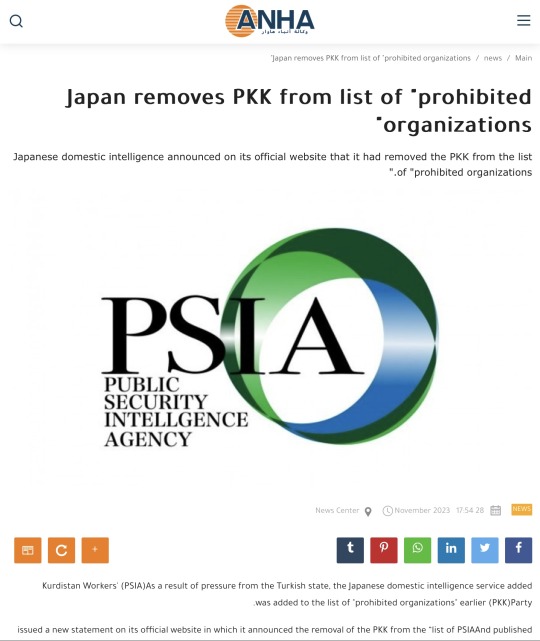
一方、ANHAは、公安調査庁が削除を発表したとしたうえで、トルコの圧力を受けて同庁がこれまでPKKをテロ組織として記載してきたと伝えた。だが、公安調査庁から削除についての発表はなく、トルコが圧力をかけてきたことも確認できない。
"HAMAS" also removed
ハマースも削除
Prior to November 27, Japan's PSIA listed 231 organizations in detail in the "Terrorist and Armed Organizations Worldwide" section of its official website (archived here).However, as of November 29, only 54 organizations are listed in the "Terrorist and Armed Organizations Worldwide" section.
11月27日以前の日本の公安調査庁が公式サイトの「世界のテロ・武装組織等」欄(アーカイブはこちら)には231の組織が詳解されていた。だが、29日現在の「世界のテロ・武装組織等」欄は54組織が掲載されているのみである。
Left: Before 27 November 2023 (most probably as of May 2023) Right: After 27 November 2023 (screenshot taken today, on 29th)


The following nine organizations have been added to the 54 organizations currently available for viewing: [Note: list of organizations omitted from translation due to possible issue with accuracy in auto-translation and time to research]
現在閲覧可能な54組織のなかには、以下の9組織が追加されている。
「アデン・イスラム軍」(IAA)
「アル・イッティハード・アル・イスラミア」(AIAI)
「ターリク・ギダル・グループ」(TGG)
「チェチェン殉教者リヤダス・サリヒン偵察破壊大隊」(RSRSBCM)
「ハラカト・シャーム・アル・イスラム」(HSI)
「ラハ・ソレイマン運動」(RSM)
「血判部隊」
「東トルキスタン・イスラム運動」(ETIM)
「イスラミック・ジハード・グループ/ユニオン」(IJG/IJU)
However, the Palestine's "HAMAS" and "Palestinian Islamic Jihad" (PIJ), which launched Operation Al Aqsa Flood on October 7, inviting the Israeli military to attack Gaza, as well as the Palestinian factions "Al-Aqsa Martyrs Brigades" (AAMB), "Army of Islam" (AOI), and "Mujahidin Shura Council around Jerusalem" (MSC), which are active in Palestine, Israel, and the surrounding countriesPalestinian factions active in Palestine, Israel, and neighboring countries, including the "Al-Aqsa Martyrs Brigades" (AAMB), the "Islamic Army" (AOI), the "Mujahidin Shura Council in the Environs of Jerusalem" (MSC), the "Popular Resistance Committees" (PRC), the "Popular Front for the Liberation of Palestine" (PFLP), the "General Command Faction of the Popular Front for the Liberation of Palestine" ((PFLP-GC), the "Palestine Liberation Front Abu Abbas Faction" (PLF), and the Lebanese "Hezbollah" (Hizbullah) have been removed. Also deleted are 183 organizations that include these groups.
だが、10月7日に「アクサーの大洪水」作戦を開始し、イスラエル軍によるガザ攻撃を招いたパレスチナの「ハマス」(HAMAS)(ハマース)や「パレスチナ・イスラミック・ジハード」(PIJ)(イスラーム聖戦機構)、そしてパレスチナ・イスラエル、および周辺諸国で活動するパレスチナ諸派の「アル・アクサ殉教者旅団」(AAMB)、「イスラム軍」(AOI)、「エルサレム周辺のムジャヒディン・シューラ評議会」(MSC)、「人民抵抗委員会」(PRC)、「パレスチナ解放人民戦線」(PFLP)、「パレスチナ解放人民戦線総司令部派」(PFLP-GC)、「パレスチナ解放戦線アブ・アッバス派」(PLF)、レバノンの「ヒズボラ」(ヒズブッラー)は削除されている。またこれらを含む183組織も削除されている。
Following are the list of organizations removed from the list: [Note: Same as above. Translation omitted for same reasons]
削除された183組織は以下の��り。
削除された183組織は以下の通り。
「ISILチュニジア」
「ISILベンガル」
「ISIL大サハラ」(ISGS)
「ISIL東アジア」(ISEA)
「アイルランド民族解放軍」(INLA)
「赤い手の防衛者」(RHD)
「赤い旅団」(BR、RB)
「アサイブ・アフル・ハック」(AAH)
「アジュナド・ミスル」
「アッサム統一解放戦線」(ULFA)
「アトムヴァッフェン・ディビジョン」(AWD)
「アハラール・アル・シャーム・イスラム運動」
「アフル・スンナ・ワル・ジャマア」(ASWJ)
「アフワーズ解放のためのアラブ闘争運動」(ASMLA)
「アフワーズ解放機構」(ALO)
「アフワーズ民主人民戦線」(ADPF)
「アラカン・ロヒンギャ救世軍」(ARSA)
「アル・アクサ殉教者旅団」(AAMB)
「アル・アシュタル旅団」(AAB)
「アル・ウマル・ムジャヒディン」
「アル・バドル」
「アル・ムラービトゥーン」
「アルジェリアのカリフ国家の戦士」
「アルスター義勇軍」(UVF)
「アルスター防衛協会」(UDA)
「アレックス・ボンカヤオ旅団-革命的プロレタリア軍」(ABB-RPA)
「アンサール」
「アンサール・アル・シャリーア」(シリア)
「アンサール・アル・シャリーア」(AAS、イエメン)
「アンサール・ウル・イスラム」(AI)
「アンサール・ガズワトゥル・ヒンドゥ」(AGH)
「アンサール・ディーン」(AD)
「アンサール・バイト・アル・マクディス」(ABM)
「アンサール・ヒラーファ・フィリピン」(AKP)
「アンサールッラー・バングラ・チーム」(ABT)
「イエメン州」
「イスラミック・ジハード・ユニオン」(IJU)
「イスラム・タリバン運動」(TTI)
「イスラム4(フォー)UK」(Islam4UK)
「イスラム軍」(AOI)
「イスラム集団」(GI)
「イスラム戦線」(IF)
「イラク・イスラム軍」(IAI)
「イラク革命者総軍事評議会」(GMCIR)
「インディアン・ムジャヒディン」(IM)
「インドネシア・ムジャヒディン評議会」(MMI)
「インド亜大陸のアルカイダ」(AQIS)
「インド学生イスラム運動」(SIMI)
「インド共産党毛沢東主義派」(CPI-M)
「エルサレム周辺のムジャヒディン・シューラ評議会」(MSC)
「オガデン民族解放戦線」(ONLF)
「オドゥーア人民会議」(OPC)
「オロモ解放戦線」(OLF)
「革命人民解放党・戦線」(DHKP/C)
「革命的セクト」(SE)
「革命的闘争」(RS、EA)
「革命旅団」
「カタイブ・ヒズボラ」(KH)
「カチン独立機構」(KIO)
「カハ」
「カビンダ解放戦線」(FLEC)
「カマタプル解放機構」(KLO)
「神の抵抗軍」(LRA)
「カリフ国家の軍」
「カレン民族同盟」(KNU)
「勧善懲悪」
「カンレイ・ヤオル・カンナ・ラプ」(KYKL)
「クルド労働者党」(PKK)
「クンプラン・ムジャヒディン・マレーシア」(KMM)
「継続IRA」(CIRA)
「ケベック解放戦線」(FLQ)
「コーカサス州」
「国際シーク青年連盟」(ISYF)
「国際主義者抵抗イニシアチブ」(IRI)
「国民解放軍」(FNL)
「国民行動」(NA)
「コロンビア革命軍」(FARC)
「コロンビア自警軍連合」(AUC)
「サビリーズ・ジャマート」
「ザ・ベース」
「サラヤ・アル・ムフタール」(SM)
「暫定アイルランド共和軍」(PIRA)
「シパエ・サハバ・��キスタン」(SSP)
「ジャイシュ・アル・アドル」(JAA)
「ジャイシュ・アル・イスラム」
「ジャイシュ・アル・ファテフ」
「シャヒード・ハムザ旅団」
「ジャマー・アンシャルシ・シャリーア」(JAS)
「ジャマーアト・ハマート・ダウワ・サラフィーヤ」(DHDS)
「ジャマート・アンサルッラー」
「ジャマートゥル・フルカーン」(JUF)
「ジャマートゥル・ムジャヒディン・バングラデシュ」(JMB)
「ジャミアトゥル・ムジャヒディン」(JUM)
「ジャム・カシミール解放戦線」(JKLF)
「シャリーア4(フォー)ベルギー」
「シャン州軍」(SSA)
「ジュヌード・アル・シャーム」
「ジュンダラ」(中東・北アフリカ)
「ジュンダラ」(南西・南アジア)
「ジュンド・アル・ヒラファ」(JAK)
「新赤い旅団・戦闘的共産主義者中核」(NBR-NCC、NCC)
「シンド解放軍」(SLA)
「シンド革命軍」(SRA)
「真のIRA」(RIRA)
「新パッタニ統一解放機構」(新PULO、New PULO)
「人民解放軍」(EPL)
「人民革命運動」(MRP)
「人民抵抗委員会」(PRC)
「スーダン人民解放運動北部」(SPLM-N)
「スクール・アル・シャーム」
「スリーパーセンターズ」
「センデロ・ルミノソ」(SL)
「戦闘的共産党創設のための反帝国主義領土中軸」(NTA-PCC)
「ソマリア州」
「ゾンネンクリーク・ディビジョン」(SKD)
「タクフィール・ワル・ヒジュラ」
「タミル・イーラム解放の虎」(LTTE)
「タリバン」
「ダルル・イスラム」(DI)
「中央アフリカ州」
「トリプラ民族解放戦線」(NLFT)
「トルコ州」
「ナガランド民族社会主義評議会」(NSCN)
「ナクシュバンディア教団信者軍」(JRTN)
「ナジュド州」
「西アフリカ州」
「ニジェール・デルタ解放運動」(MEND)
「西パプア民族解放軍」(TPNPB)
「ネオJMB」
「パキスタン州」
「バスク祖国と自由」(ETA)
「ハスム」
「パッタニ・イスラム・ムジャヒディン運動」(GMIP)
「パッタニ・マレー民族革命戦線」(BRN)
「パッタニ統一解放機構」(PULO)
「ババル・カルサ・インターナショナル」(BKI)
「ハマス」(HAMAS)
「ハラカト・アンサール・イラン」(HAI)
「パラグアイ人民軍」(EPP)
「ハルカトゥル・ムジャヒディン・アルアラミ」(HUM-A)
「バルチスタン解放軍」(BLA)
「パレスチナ・イスラミック・ジハード」(PIJ)
「パレスチナ解放人民戦線」(PFLP)
「パレスチナ解放人民戦線総司令部派」(PFLP-GC)
「パレスチナ解放戦線アブ・アッバス派」(PLF)
「バンサモロ・イスラム自由戦士」(BIFF)
「非公式アナキスト連盟」(FAI)
「ヒズブル・ムジャヒディン」(HM)
「ヒズボラ」
「ヒニウトレプ民族解放評議会」(HNLC)
「ヒンズー過激諸派」
「ヒンド州」
「フィリピン共産党」(CPP)/「新人民軍」(NPA)
「フォイヤークリーク・ディビジョン」(FKD)
「フォルサン・アリザ」
「フッラース・アル・ディーン」(HAD)
「プラウド・ボーイズ」
「ペジャーク」(PJAK)
「ボドランド民族民主戦線」(NDFB)
「炎の陰謀中核」(SPF)
「マイマイ」
「マウテ・グループ」
「南スーダン解放軍」(SSLA)
「民主同盟軍」(ADF)
「民族解放軍」(ELN)
「ムジャヒディン軍」(JAM)
「モジャヘディネ・ハルグ」(MKO)
「モロ・イスラム解放戦線」(MILF)
「モロ民族解放戦線」(MNLF)
「モンバサ共和評議会」(MRC)
「預言者ムハンマドのイスラム法施��運動」(TNSM)
「ラシュカレ・イスラム」(LI)
「ラハ・ソレイマン・イスラム運動」(RSIM又はRSM)
「リビア州」
「リヤダス・サリヒン偵察破壊大隊」(RSRSB)
「ルーベ団」
「ルワンダ解放民主軍」(FDLR)
「ロイヤリスト義勇軍」(LVF)
「ロシア帝国運動」(RIM)
「ワ州連合軍」(UWSA)
「10月1日反ファシスト抵抗グループ」(GRAPO)
「11月17日革命機構」(EO17N、17N)
「3月23日運動」(M23)
Born in Tokyo in 1968. Professor at Tokyo University of Foreign Studies. Graduated from Tokyo University of Foreign Studies. Doctorate degree from Hitotsubashi University. Representative of the Sadaqa Initiative (https://sites.google.com/view/sadaqainitiative70), a campaign to support victims of the Syrian earthquake.Formerly a joint researcher at the French-Arab Institute in Damascus, Syria, and a researcher at JETRO's Institute of Developing Economies. He specializes in the politics, ideology, and history of the contemporary East Arab region. His publications include "Syria in Stalemate," "The Situation in Syria," "Stalemate in Syria," and "Russia and Syria". He runs a website, "Syrian Arab Spring: The Journey of the Syrian Arab Spring" (http://syriaarabspring.info/).
1968年東京生まれ。東京外国語大学教授。東京外国語大学卒。一橋大学大学院にて博士号取得。シリア地震被災者支援キャンペーン「サダーカ・イニシアチブ」(https://sites.google.com/view/sadaqainitiative70)代表。シリアのダマスカス・フランス・アラブ研究所共同研究員、JETROアジア経済研究所研究員を経て現職。専門は現代東アラブ地域の政治、思想、歴史。著書に『混迷するシリア』、『シリア情勢』、『膠着するシリア』、『ロシアとシリア』などがある。ウェブサイト「シリア・アラブの春顛末記」(http://syriaarabspring.info/)を運営。
6 notes
·
View notes
Photo
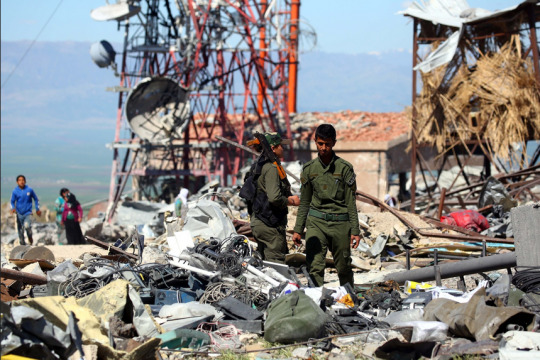
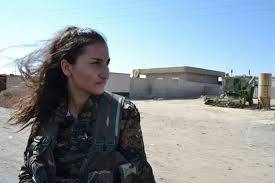
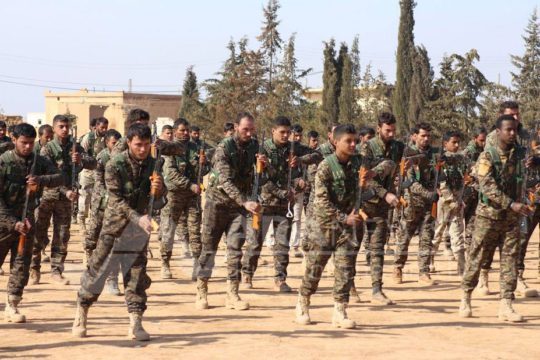
#CorpMedia #Idiocracy #Oligarchs #MegaBanks vs #Union #Occupy #NoDAPL #BLM #SDF #DACA #MeToo #Humanity #DemExit #FeelTheBern
Turkish Strikes Target Kurdish Allies of U.S. in Iraq and Syria [UPDATES]
https://www.nytimes.com/2017/04/25/world/middleeast/turkey-kurds-airstrikes-iraq-syria.html
Turkish warplanes bombed Kurdish fighters in Iraq and Syria on Tuesday in an unusually intense operation that presented a new complication for the United States’ military campaign against the Islamic State...
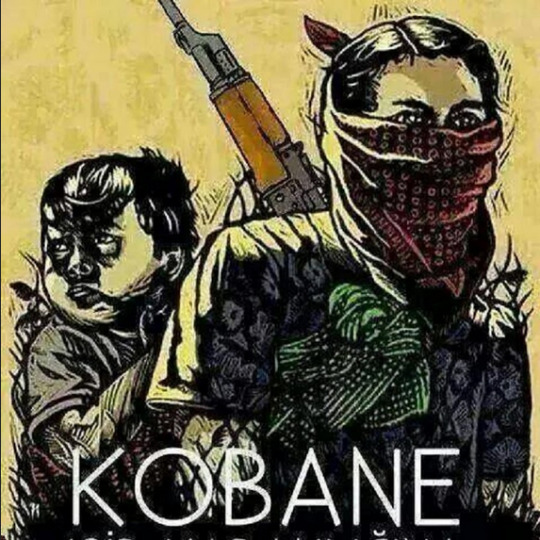
RELATED UPDATE: Revolution Defended in Rojava–For Now
https://newpol.org/revolution-defended-rojava-now/
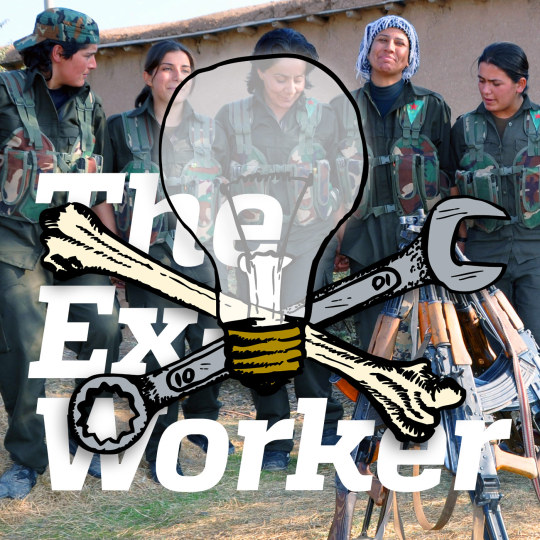
RELATED UPDATE: #36: The Rojava Revolution Social revolution in Rojava, May Day report, “A Small Key Can Unlock…” review
https://crimethinc.com/podcasts/the-ex-worker/episodes/36
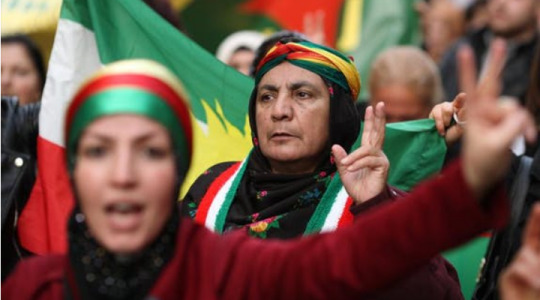
RELATED UPDATE: The politics of the Kurdish struggle
https://redflag.org.au/node/5116
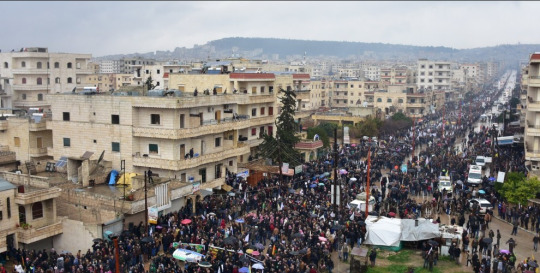
RELATED UPDATE: Afrin Will Not Be Alone! (excerpts from the Call for Solidarity by the Democratic Administration of Rojava)
https://lefteast.org/afrin-will-not-be-alone-excerpts-from-the-call-for-solidarity-by-the-democratic-administration-of-rojava/
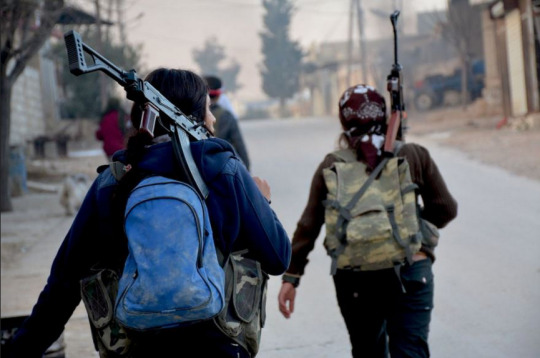
RELATED UPDATE: Defending Afrin
https://jacobin.com/2018/02/afrin-kurdistan-syria-turkey-erdogan-is-war
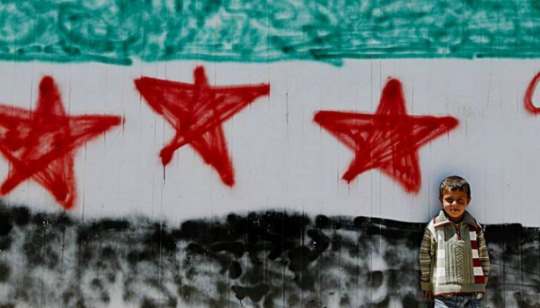
RELATED UPDATE: “Our Destinies are Linked”: Joseph Daher on the Syrian Revolution
https://itsgoingdown.org/our-destinies-are-linked-joseph-daher-on-the-syrian-revolution/

RELATED UPDATE: Here’s why we’re planting trees in northern Syria
https://www.independent.co.uk/voices/syria-latest-planting-trees-internationalist-commune-bashar-al-assad-isis-middle-east-a8437646.html

RELATED UPDATE: The Women of the Revolution: inside the Kurdish Rojava Revolution
https://www.heraldscotland.com/news/16735844.women-revolution-inside-kurdish-rojava-revolution/
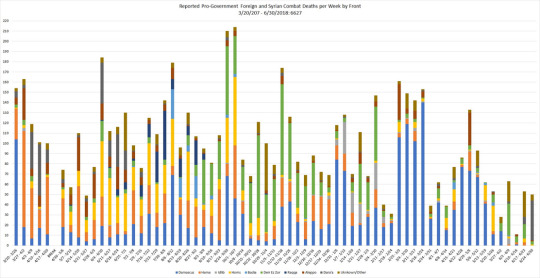
RELATED UPDATE: Fifteen Months of Death: Pro-Government Casualties of the Syrian Civil War
https://www.bellingcat.com/news/mena/2018/10/03/fifteen-months-death-pro-government-casualties-syrian-civil-war/

RELATED UPDATE: Demand Utopia Presents: Talks On Mutual Aid Disaster Relief & Rojava Revolution
https://itsgoingdown.org/demand-utopia-presents-talks-on-mutual-aid-disaster-relief-rojava-revolution/

RELATED UPDATE: 'Don't abandon the Kurds', British officials tell US over Syria troop withdrawal
https://www.telegraph.co.uk/news/2019/02/13/dont-abandon-kurds-british-officials-tell-us-syria-troop-withdrawal/
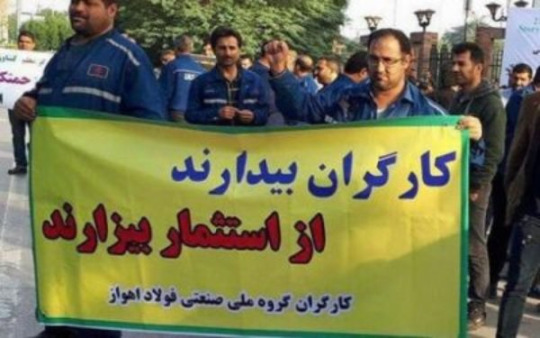
RELATED UPDATE: Sunday, July 21: Livestream Facebook Dialogue Between Venezuelan, Syrian and Iranian Socialists
https://newpol.org/sunday-livestream-facebook-dialogue-between-venezuelan-syrian-and-iranian-socialists/
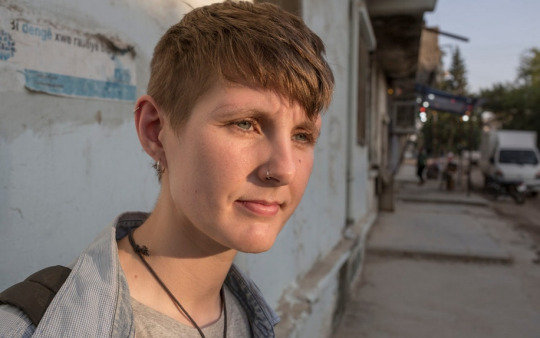
RELATED UPDATE: British revolutionaries in Syria say they will defy Home Office's new terrorism laws
https://www.telegraph.co.uk/news/2019/07/27/british-revolutionaries-syria-say-will-defy-home-offices-new/
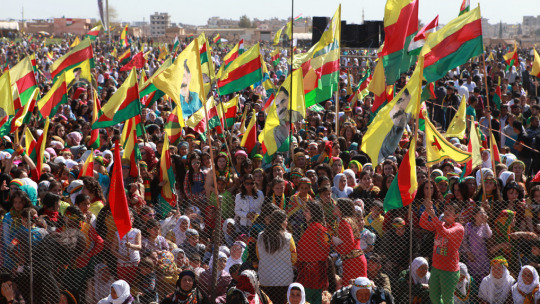
RELATED UPDATE: Hevrin Khalaf and the spirit of the democratic nation
https://roarmag.org/essays/hevrin-khalaf-interview/
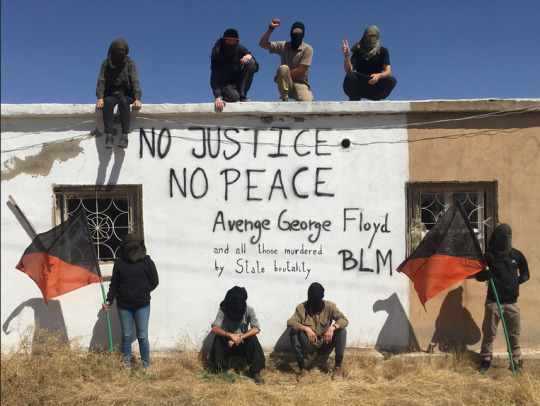
RELATED UPDATE: One Year Since the Turkish Invasion of Rojava: An Interview with Tekoşîna Anarşîst
https://crimethinc.com/2020/10/11/one-year-since-the-turkish-invasion-of-rojava-an-interview-with-tekosina-anarsist-on-anarchist-participation-in-the-revolutionary-experiment-in-northeast-syria

RELATED UPDATE: Ten years since the great Arab revolutions
https://redflag.org.au/article/ten-years-great-arab-revolutions

RELATED UPDATE: Defending Rojava means defending 4bdullah 0calan
https://internationalistcommune.com/defending-rojava-means-defending-abdullah-ocalan/
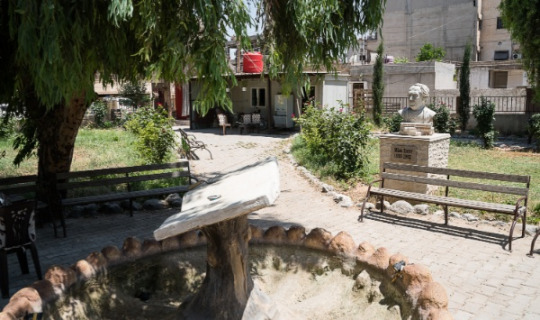
RELATED UPDATE: In Rojava, considering a literature of the revolution
https://www.kedistan.net/2021/06/29/rojava-literature-of-revolution/
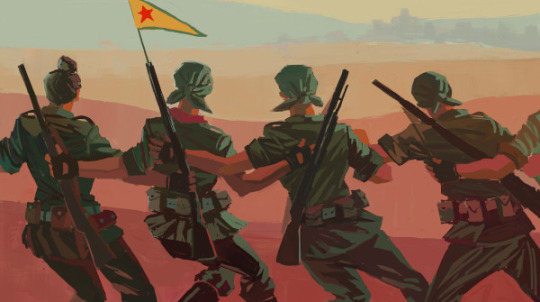
RELATED UPDATE: Celebrating the Rojava Revolution: A Reading List
https://roarmag.org/2021/07/19/rojava-revolution-reading-list/

RELATED UPDATE: We must not let ISIS and the Turkish State destroy our allies in Syria
https://www.kedistan.net/2022/02/04/not-let-isis-and-turkish-state/

RELATED UPDATE: KNK issues public call demanding the OPCW to investigate Turkey's use of chemical weapons
https://anfenglishmobile.com/news/knk-issues-public-call-demanding-the-opcw-to-investigate-turkey-s-use-of-chemical-weapons-59596

RELATED UPDATE: Turkey Is Starving the Rojava Revolution
https://jacobin.com/2022/11/rojava-turkey-attacks-water-shortage-cooperative-economy
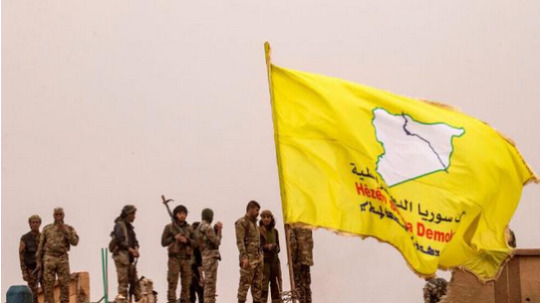
RELATED UPDATE: Syrian Democratic Forces (SDF): We will respond effectively and efficiently at the right time and place
https://links.org.au/statements-condemn-turkeys-unjust-attacks-north-east-syria-and-northern-iraq
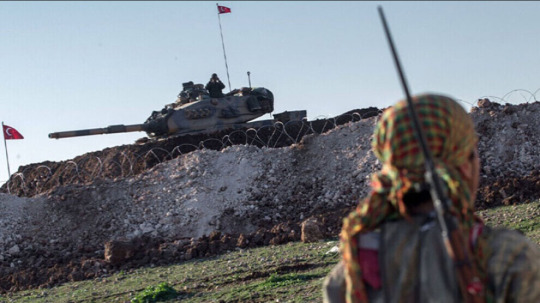
RELATED UPDATE: International voices against the Erdogan regime’s war against the Kurds
https://anfenglishmobile.com/news/international-voices-against-the-erdogan-regime-s-war-against-the-kurds-63851

RELATED UPDATE: Turkish strikes on US Kurd allies resonate in Ukraine war
https://apnews.com/article/islamic-state-group-nato-syria-bucharest-turkey-bb1980f532b5a44cbc693897c853d9f1

RELATED UPDATE: Northeast Syria: Turkish Strikes Exacerbate Humanitarian Crisis
https://www.hrw.org/news/2022/12/07/northeast-syria-turkish-strikes-exacerbate-humanitarian-crisis
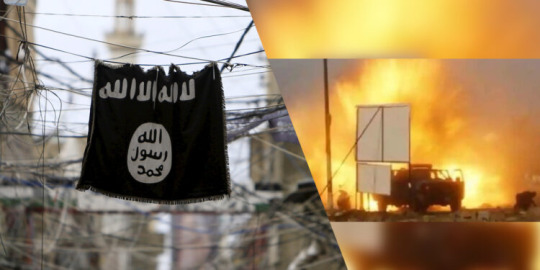
RELATED UPDATE: Syrian Democratic Forces warn against increasing ISIS attacks
https://medyanews.net/syrian-democratic-forces-warn-against-increasing-isis-attacks/
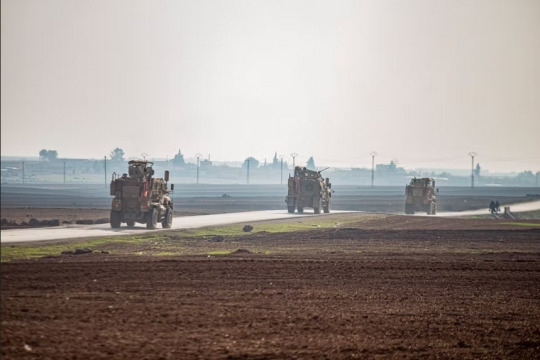
RELATED UPDATE: Syrian Democratic Forces say 6 fighters killed in IS attack
https://www.independent.co.uk/news/sdf-ap-islamic-state-raqqa-democratic-b2251559.html
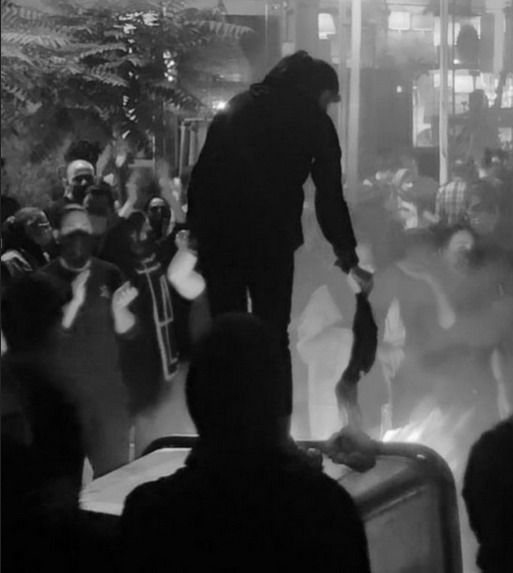
RELATED UPDATE: “They have the technology, they have the weapons, they have the money, they have everything. What do we have? We have solidarity!” Lessons from the Rojava Revolution
https://lefteast.org/lessons-from-rojava-revolution/
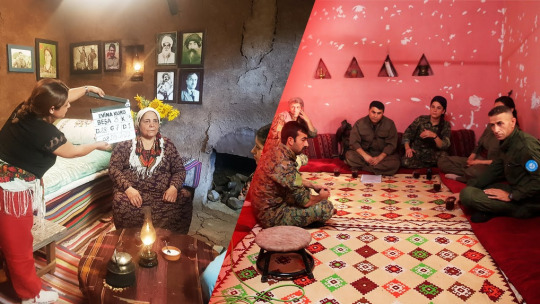
RELATED UPDATE: WATCH Series exploring societal changes in North and East Syria after Rojava revolution ready for release
https://medyanews.net/series-exploring-societal-changes-in-north-and-east-syria-after-rojava-revolution-ready-for-release/
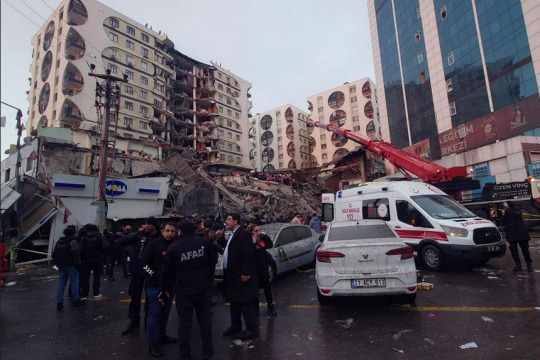
RELATED UPDATE: Turkey and Syria: More than 600 killed in powerful earthquake
https://www.heraldscotland.com/news/23301447.turkey-syria-600-killed-powerful-earthquake/

RELATED UPDATE: ISIS Attacks on Syria Truffle Hunters are Deadliest in a Year
https://english.aawsat.com/home/article/4174991/isis-attacks-syria-truffle-hunters-are-deadliest-year
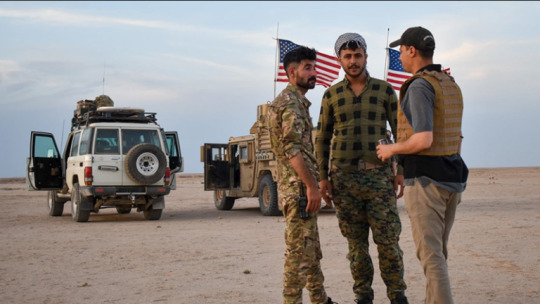
RELATED UPDATE: Syrian Kurds Are Hoping for, but Not Banking On, Continued US Partnership
https://arabcenterdc.org/resource/syrian-kurds-are-hoping-for-but-not-banking-on-continued-us-partnership/
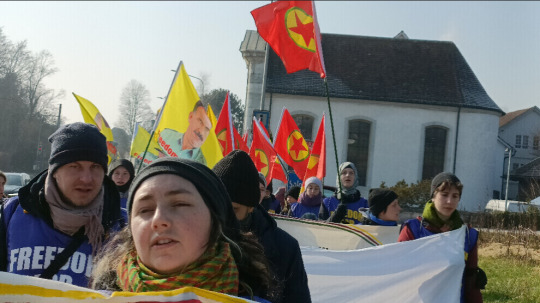
RELATED UPDATE: From Abya Yala to Kurdistan: ¡the peoples organize the revolution!
https://anfenglishmobile.com/features/from-abya-yala-to-kurdistan-the-peoples-organize-the-revolution-65760
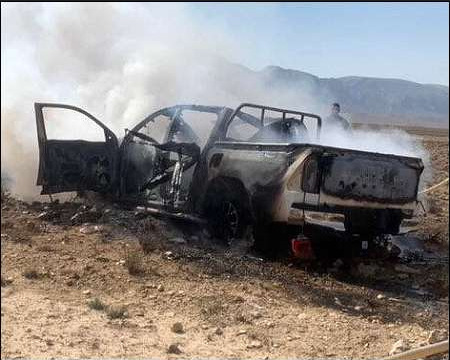
RELATED UPDATE: Three YBS fighters killed in Turkish drone attack in Iraq’s north
https://ekurd.net/three-ybs-fighters-killed-2023-02-28
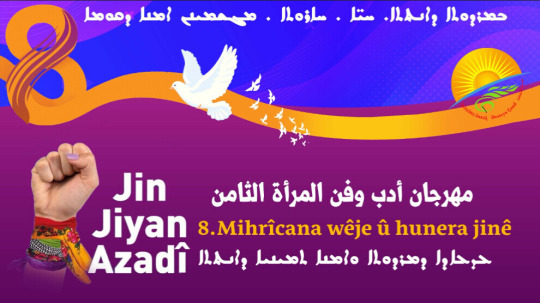
RELATED UPDATE: 8th Women's Art and Culture Festival kicks off today in Qamishlo
https://anfenglishmobile.com/women/8th-women-s-art-and-culture-festival-kicks-off-today-in-qamishlo-65784
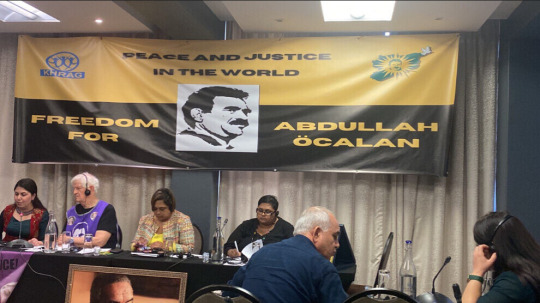
RELATED UPDATE: Conference for 0calan’s freedom in Cape Town continues on day two
https://anfenglishmobile.com/news/conference-for-Ocalan-s-freedom-in-cape-town-continues-on-day-two-65786

RELATED UPDATE: SDF announces the outcome of Turkish attacks against North-East Syria in February
https://anfenglishmobile.com/rojava-syria/sdf-announces-the-outcome-of-turkish-attacks-against-north-east-syria-in-february-65788
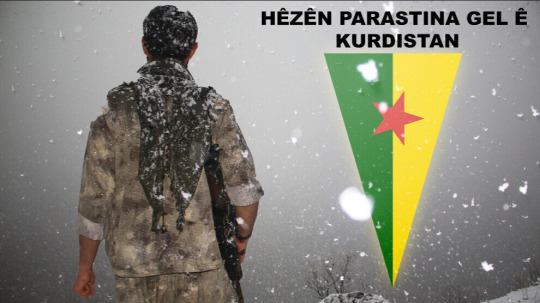
RELATED UPDATE: HPG releases balance sheet of war for February
https://anfenglishmobile.com/kurdistan/hpg-releases-balance-sheet-of-war-for-february-65789
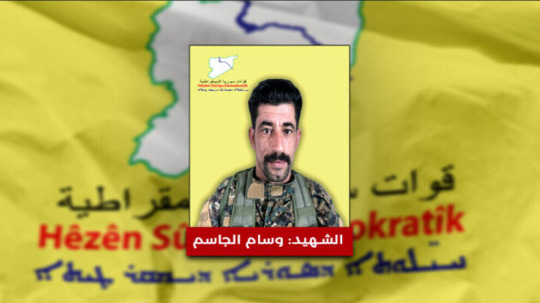
RELATED UPDATE: SDF fighter killed in Turkish attack in Ain Issa
https://anfenglishmobile.com/rojava-syria/sdf-fighter-killed-in-turkish-attack-in-ain-issa-65794
7 notes
·
View notes
Text

B-1B Fires JASSM Missile During Long-Range Training Sortie From U.K.
The B-1Bs flew from RAF Fairford to Qatar as part of a long-range training mission in which multiple types of weapons were employed.
Tyler RogowayPUBLISHED Jun 8, 2023 9:36 PM EDT
B-1B BOMBER TASK FORCE AGM-158
USAF/Composite
Details are a bit thin on what appears to have been an unprecedented training mission flown by B-1B Bones that are currently forward deployed to RAF Fairford in the United Kingdom as part of the Bomber Task Force rotation. The Bones in question flew all the way to the Persian Gulf, and fired some very high-end weapons along the way — including AGM-158 Joint Air-to-Surface Standoff Missiles (JASSMs). They also came away with some great video to show for it:
youtube
The clip of the stealthy JASSM being chased over the desert before it dives down onto a target range is accompanied by the following caption:
"A live AGM-158A Joint Air-to-Surface Standoff Missile deploys in the U.S. Central Command area of responsibility during a Bomber Task Force mission, June 8, 2023."
The video of the JASSM in action was apparently shot over central Jordan.

The USAF states that a GBU-39 Small Diameter Bomb was also employed on the sortie, but it's not clear where.

A U.S. Air Force B-1B Lancer approaches a U.S. Air Force KC-10A Extender for fuel during a Bomber Task Force mission above the Kingdom of Saudi Arabia, June 8, 2023. The BTF mission was designed to build agility and interoperability between the U.S. and coalition partners while demonstrating the rapid deployment of combat power to deter regional aggression while promoting regional stability in Southwest Asia. (U.S. Air Force photo by Staff Sgt. Frank Rohrig)
Video was also posted showing the B-1Bs being loaded with live JASSMs in England prior to departing:
youtube
"Ninth Air Force (Air Forces Central) aircraft joined 2 B-1B Lancers assigned to the 9th Expeditionary Bomb Squadron over the U.S. Central Command area of responsibility, along with five partner nations and other coalition forces. This particular BTF mission was historic in that it was the first time AFCENT flew multiple weapons types and practiced employment against multiple simulated targets during single bomber task force mission."
youtube
This was a complex training mission that included coordination with multiple foreign air arms, with the jets navigating through many different areas on their long-range sortie. These missions are just as much about solidifying allegiances and signaling to potential foes as they are about training.

U.S. Air Force B1-B Lancers are escorted by coalition fighters over Al Udeid Air Base, Qatar, during a Bomber Task Force June 8, 2023. Bomber Task Force rotations support U.S. National Defense Strategy objectives through strategic predictability and operational unpredictability, and the steady rotation of strategic bombers into the theater enables interoperability and enhances operational readiness. (U.S. Air Force photo by Tech. Sgt. Devin Boyer)

The B-1Bs from Dyess AFB arrived in the U.K. in the last week of May and have been very active since. Their presence in the region as the war in Ukraine rages is impossible to ignore regardless of how routine these rotations have become.
The use of JASSM is particularly interesting as it remains the B-1B's most potent land-attack weapon. The B-1 also was the first aircraft to fire the JASSM in anger. That mission, which The War Zone was first to report on, was part of a large package of cruise missile strikes against Syrian targets in response to a gas attack on civilians back in 2018.

It will be interesting to see where the forward-deployed Bones end up next.
2 notes
·
View notes
Text
Russia and new Syrian government engage in talks to restore relations
Syria's state agency Sana reports that the Syrian government announced discussions with a Russian delegation about "restoring relations" between the two nations.
The Russian side reaffirmed its support for the ongoing positive changes happening in Syria. Talks highlighted Russia's role in rekindling relations with the Syrian people through specific measures like compensation, reconstruction, and restoration.
The new administration also emphasized that restoring relations should take past mistakes into account, respect the will of the Syrian people, and serve their interests. Mechanisms of transitional justice were discussed to "ensure justice for victims of the brutal war waged by the Assad regime."
The delegation, led by Russia's Special Presidential Envoy for the Middle East and Africa, Deputy Foreign Minister Mikhail Bogdanov, arrived in Damascus and met with the new Syrian administration ahead of these talks. Syrian participants included the leader of the "Hayat Tahrir al-Sham" (HTS) group and de facto leader of Syria, Ahmed al-Sharaa (formerly known as Abu Mohammad al-Julani), Foreign Minister Asa'ad al-Shibani, among others.
Following the meeting, Bogdanov mentioned that discussions were held on the future of Russian military bases in Syria, although no agreements had been reached.
"Nothing is changing yet. This issue requires further negotiations. We have agreed to continue more in-depth consultations on each area of our cooperation," said the special envoy.
Former Syrian ruler Bashar al-Assad, who was overthrown by Syrian factions led by HTS in December, has found refuge with his family in Moscow.
According to a report by the Financial Times, $250 million in cash was transported from Syria to Russia during 2018–2019 alone.
0 notes
Text
LGBTQIA+ activist welcomes fall of Assad in Syria
New Post has been published on https://qnews.com.au/lgbtqia-activist-welcomes-fall-of-assad-in-syria/
LGBTQIA+ activist welcomes fall of Assad in Syria

The founder of a Syrian LGBTQIA+ activist group who was twice tortured by the rebels who now control the country says he is cautiously optimistic about what the future may hold in a post-Assad Syria.
Francois Zankih founded the group Guardians of Equality Movement (GEM) in February of 2020 but was forced to flee to Canada after rebel group Hayʼat Tahrir al-Sham (HTS) issued a “death penalty and hunting warning” against him over his activism.
He was previously kidnapped and tortured by HTS precursor group Jabhat al-Nusra in 2016 when it was still affiliated with Al-Qaeda, and again in 2018 by HTS after it had cut ties with Al-Qaeda.
HTS and Turkish backed militia groups seized control of Syria in November, prompting Syrian President Bashar al-Assad to flee the country.
HTS have now established what they say is only a transitional government under Syria’s Prime Minister, Mohammed al-Bashir, which will run the country until March of 2025.
HTS leader Abu Mohammed al-Jolani, also known as Ahmed al-Sharaa, has stressed that ethnic and religious minorities in Syria should have nothing to fear under the transitional administration.
“Of course we are worried about our future. I do not want HTS to be the government of Syria, ever,” Zankih told the UK’s Metro earlier this week.
“We do not know what’s next, but the happiness now is stronger than worry.”
Zankih noted that HTS has “changed their behaviour by protecting minorities such as Christians.”
“They want it to be more open. They want to build a relationship with the international community,” adding that, “HTS have not been targeting activists.”
Zankih says that HTS has contacted him to say that they no longer have a problem with his activism, though he does not feel he can fully trust them yet.
It’s estimated that over a quarter of a million LGBTQIA+ Syrians fled the country during the Assad regime, and Zankih now believes that “many LGBT Syrians will go back” as a result of its fall.
Homosexuality is criminalised in Syria under its 1949 Penal Cole which punishes “unnatural sexual intercourse” with up to three years in prison.
A 2021 UN Human Rights Commission report accused HTS of issuing death sentences against “women and sexual minorities, including men accused of homosexuality” in the areas it controlled during the Syrian civil war.
However GEM has heard that a gay man who was deported back to Syria from Turkey five months ago was only jailed for two weeks when he recently came to the attention of HTS and was only made to memorise verses from the Quaran during his time in detention.
“There is a behaviour change, but maybe tomorrow someone will be killed by HTS because he is gay. I do not know,’ Zankih told Metro.
He said that, for now, “HTS are busy controlling the entire country, they are not paying attention to the LGBTQ+ community.”
For the latest LGBTIQA+ Sister Girl and Brother Boy news, entertainment, community stories in Australia, visit qnews.com.au. Check out our latest magazines or find us on Facebook, Twitter, Instagram and YouTube.
0 notes
Text
Is World War III Already Here? Russia, China Tell Their Citizens To Evacuate Syria. Oreshniks will be based in Belarus. Macron to host Trump&Zelensky. Canada’s Gun Grab. TikTok on the Clock
Lioness of Judah Ministry
Dec 07, 2024
Is World War III Already Here?
The 'Axis of Upheaval' is on the march—and the U.S. must figure out how to respond.
If it feels like the world is on fire right now, that's because it is. From Ukraine to Syria to the Korean Peninsula, a widening array of conflicts is raising questions among defense experts: Is it 1914 again? 1939? Has World War III already started and we're just now figuring it out? For retired Lieutenant General H.R. McMaster, who served as Donald Trump's second national security adviser from 2017–2018, the answer is clear. "I think we're on the cusp of a world war," McMaster told The Free Press. "There's an economic war going on. There are real wars going on in Europe and across the Middle East, and there's a looming war in the Pacific. And I think the only way to prevent these wars from cascading further is to convince these adversaries they can't accomplish their objectives through the use of force."
Russia, China Tell Their Citizens To Evacuate Syria Immediately
…take advantage of the fact that commercial flights are still in operation.
In a sign of likely more bad things to come for Assad forces, Syria's closest powerful ally Russia has ordered all of its civilian nationals to leave the country as the al-Qaeda linked group Hayat Tahrir al-Sham continues its shock offensive, making its way south from captured Aleppo area to Hama and Homs into the heart of the country. "Russia on Friday urged its citizens to leave Syria, as rebel forces in the country press a lightning offensive against Moscow-ally Bashar al-Assad's government," AFP confirms. The Russian embassy in Damascus issued an alert telling citizens "to leave the country on commercial flights through airports in operation" while underscoring "difficult military and political situation" in Syria.
Iran evacuates personnel in Syria as rebels further advance - NYT
Iranian Foreign Minister Abbas Araghchi also traveled to the Syrian capital this week to meet with Assad to pledge the Islamic Republic's full support.
The Islamic Republic of Iran began evacuating its Quds Force's personnel and military officials from Syria into neighboring countries such as Iraq and Lebanon, The New York Times reported late Friday, citing regional and Iranian officials. The officials said that within the Quds Force, two of their top generals fled to Iraq. This move comes as rebels who oppose Syrian President Bashar Al-Assad have been seizing cities that are a threat to his rule. The NYT report also noted the evacuation of diplomatic staff of the Islamic Republic, their families, and Iranian civilians from the country as well.
Second front opens up in southern Syria, as Druze militias clash with fleeing regime forces
The IDF announced that it was reinforcing the Golan Heights with additional troops, saying it would "not tolerate threats near the Israeli border."
A second front opened in the Syrian Civil War on Friday following several uprisings in southern Syria, which led regime forces to flee several key cities in the region. At least four people were killed and 16 injured in clashes between Druze militias and regime security forces in Sweida, according to local media. Militias took control of the main police station and the biggest civilian prison hours after hundreds of people protested in a main square demanding the downfall of President Bashar al-Assad. Later in the day, the major military headquarters in the nearby town of Harek was captured.
US-backed militants seize city in Syria – media
The Kurdish-dominated Syrian Democratic Forces has taken full control of the eastern city of Deir ez-Zor, according to Reuters
The Syrian Democratic Forces (SDF), a US-backed military coalition dominated by Kurdish groups, has seized the eastern Syrian city of Deir ez-Zor, according to Reuters. Two security sources based in eastern Syria have reportedly told the outlet that the SDF had taken full control of the city by Friday afternoon. SDF forces also reportedly control several neighborhoods in Aleppo that are encircled by islamist insurgents.
0 notes
Text
Syrian opposition activists say insurgents have reached suburbs of Damascus
Beirut: Insurgents’ stunning march across Syria gained speed Saturday with news that they had reached the suburbs of the capital and the government forced to deny rumours that President Bashar Assad had fled the country. The move, reported by pro-government media and an opposition war monitor, was the first time that opposition forces reach the outskirts of the Syrian capital since 2018, when…
0 notes
Text
Events 8.4 (after 1930)
1936 – Prime Minister of Greece Ioannis Metaxas suspends parliament and the Constitution and establishes the 4th of August Regime. 1944 – The Holocaust: A tip from a Dutch informer leads the Gestapo to a sealed-off area in an Amsterdam warehouse, where they find and arrest Jewish diarist Anne Frank, her family, and four others. 1944 – Under the state of emergency law, the Finnish Parliament elects Marshal C. G. E. Mannerheim as the President of Finland to replace the resigned Risto Ryti. 1946 – An earthquake of magnitude 8.0 hits northern Dominican Republic. One hundred are killed and 20,000 are left homeless. 1947 – The Supreme Court of Japan is established. 1964 – Civil rights movement: Civil rights workers Michael Schwerner, Andrew Goodman and James Chaney are found dead in Mississippi after disappearing on June 21. 1964 – Second Gulf of Tonkin Incident: U.S. destroyers USS Maddox and USS Turner Joy mistakenly report coming under attack in the Gulf of Tonkin. 1965 – The Constitution of the Cook Islands comes into force, giving the Cook Islands self-governing status within New Zealand. 1969 – Vietnam War: At the apartment of French intermediary Jean Sainteny in Paris, American representative Henry Kissinger and North Vietnamese representative Xuân Thuỷ begin secret peace negotiations. The negotiations will eventually fail. 1972 – Ugandan President Idi Amin announces that Uganda is no longer responsible for the care of British subjects of Asian origin, beginning the expulsions of Ugandan Asians. 1974 – A bomb explodes in the Italicus Express train at San Benedetto Val di Sambro, Italy, killing 12 people and wounding 22. 1975 – The Japanese Red Army takes more than 50 hostages at the AIA Building housing several embassies in Kuala Lumpur, Malaysia. The hostages include the U.S. consul and the Swedish Chargé d'affaires. The gunmen win the release of five imprisoned comrades and fly with them to Libya. 1977 – U.S. President Jimmy Carter signs legislation creating the United States Department of Energy. 1983 – Jean-Baptiste Ouédraogo, president of the military government of Upper Volta, is ousted from power in a coup d'état led by Captain Thomas Sankara. 1984 – The Republic of Upper Volta changes its name to Burkina Faso. 1987 – The Federal Communications Commission rescinds the Fairness Doctrine which had required radio and television stations to present controversial issues "fairly". 1995 – Operation Storm begins in Croatia. 2006 – A massacre is carried out by Sri Lankan government forces, killing 17 employees of the French INGO Action Against Hunger (known internationally as Action Contre la Faim, or ACF). 2007 – NASA's Phoenix spacecraft is launched. 2018 – Syrian civil war: The Syrian Democratic Forces (SDF) expel the Islamic State of Iraq and the Levant (ISIL) from the Iraq–Syria border, concluding the second phase of the Deir ez-Zor campaign. 2018 – Crisis in Venezuela: Seven people are injured when two drones detonate explosives on Avenida Bolívar, Caracas while president Nicolás Maduro is giving a speech to the Venezuelan National Guard. 2019 – Nine people are killed and 26 injured in a shooting in Dayton, Ohio. This comes only 13 hours after another mass shooting in El Paso, Texas, where 23 people were killed. 2020 – Beirut Port explosion: At least 220 people are killed and over 5,000 are wounded when 2,700 tons of ammonium nitrate explodes in Beirut, Lebanon.
0 notes
Text
Nine others died in the August 23 plane crash that reportedly killed Yevgeny Prigozhin, the mercenary leader who staged a brief mutiny against Russia’s Defense Ministry in late June. Prigozhin’s death isn’t verified yet, but Russia’s Federal Air Transport Agency has confirmed that he was on the passenger list. The other high-profile passenger aboard the doomed flight was Dmitry Utkin, the Wagner Group commander whose callsign is the basis for the company’s very name. Journalists at BBC Russian and the Dossier Center collected information about the other passengers and crew members who perished in the crash. Meduza summarizes these reports.
Passengers
Valery Chekalov
Chekalov managed multiple companies in St. Petersburg that were linked to Prigozhin. BBC Russia learned that his acquaintances logged his number in their phones as “Valery Evgenievich Syria,” “Valery Chekalov Concord Army,” and “Valery Evgenievich Chekalov from Prigozhin.” From 2011 to 2018, he headed the company “Kollektiv-Servis,” which won a contract with the Defense Ministry’s Commissary in 2012 to supply food to the army. Around the same time, the company registered an entity with a mess hall in Sevastopol, the home of Russia’s Black Sea Fleet.
Chekalov also managed a company created in 2014 called “Neva,” which operated the subsidiary “Evro Polis” — the same Evro Polis that signed a memorandum with the Syrian government in 2016 to recapture and guard oil facilities in exchange for the value of 25 percent of the oil and gas produced there, according to reporting by the news outlet Fontanka.
Evgeny Makaryan
Born in Magnitogorsk, Makaryan was a former police officer. According to the Dossier Center, he joined Wagner Group in March 2016, serving in its fourth assault detachment in Syria, where he was wounded. BBC Russian calls him one of Prigozhin’s bodyguards.
Sergey Propustin
Propustin is listed at Myrotvorets, the Ukrainian website that names and sometimes doxxes people its authors consider to be “enemies of Ukraine.” Myrotvorets identifies him as a grenadier reconnaissance officer and Wagner Group fighter. According to the Dossier Center, Propustin fought in the Second Chechen War. He reportedly joined Wagner in March 2015 and fought in its second reconnaissance assault detachment, from which Prigozhin would later recruit several of his personal bodyguards. Accordingly, BBC Russian reports that Propustin was another Prigozhin bodyguard.
Alexander Totmin
Myrotvorets lists Totmin too. It’s unknown when he started working for Prigozhin, but journalists learned that he was living in St. Petersburg as recently as 2022. His phone number shows up in shared databases identified as “Sanya Work PMC,” “Totmin Sanya Kontora Piter,” and “Alexander W.” In August 2012, a court in the Altai Krai sentenced him to 300 hours of community service for stealing a chainsaw from a bathhouse located on someone else’s property. In September 2014, he was sentenced to two years of probation for car theft.
Nikolai Matuseev
Researchers at the Dossier Center believe that the Nikolai Matuseev listed among the plane-crash passengers is the same one who joined Wagner Group in January 2017. He was a gunner in the organization’s fourth assault detachment in Syria.
Crew
Rustam Karimov
The aircraft’s 29-year-old second pilot, Karimov lived with his wife in Perm. He graduated from the Sasovo Flight School in Russia’s Ryazan region in 2014. Karimov’s father told reporters that his son was unemployed at the start of the full-scale invasion of Ukraine. He says Rustam found work three months ago with MNT-Aero, the company that owns the crashed plane, and then moved to St. Petersburg.
Alexey Levshin
Levshin was the plane’s captain. His daughter Anastasia told the news outlet RBC that her father had worked with Prigozhin for many years, though she provided no further details. BBC Russian discovered that Levshin was featured in a 2018 broadcast by the television network Vesti Novosibirsk about an airshow that included military pilots. In the story, he was identified as the navigator of a Sukhoi Su-34 crew.
Kristina Raspopova
Raspopova was the plane’s flight attendant. Thirty-nine years old, she was born in what is now Kazakhstan. According to the news outlet 74.ru, her younger brother is the deputy prosecutor in Yemanzhelinsk, a city in Russia’s Chelyabinsk region. She attended the Moscow Finance and Law University and lived for some time in Yekaterinburg before moving to Moscow. The Telegram channel Baza reports that she relocated to St. Petersburg after finding a job at MNT-Aero.
Posts on social media indicate that Raspopova often traveled abroad, sharing photos from Jamaica, Singapore, Austria, and other countries. Multiple times, she flew aboard a business jet similar to the plane that crashed: an Embraer Legacy with the tail number RA-02857 based at Vnukovo International Airport, which she frequented. According to Baza, Raspopova spoke to her family a few hours before her final flight departed and said that the plane had been delayed for some reason.
6 notes
·
View notes
Text
The principal partner of the US government in north-east Syria is engaged in the large-scale and systematic violation of the rights of more than 56,000 (About 30,000 children) people in its custody.
These people include Syrians, Iraqis and other foreign nationals from an estimated 74 countries. The majority came into the custody of the Syrian Democratic Forces (SDF) in late 2018 and early 2019 during the final battles with the Islamic State (IS) armed group. They are now being held in a vast network of at least 27 detention facilities and two detention camps.
Amnesty International investigated the situation of people with perceived or alleged affiliation with IS in detention camps and facilities in north-east Syria for nearly two years, from March 2022 to February 2024
Based on this research, Amnesty International concludes that the autonomous authorities have committed serious violations of human rights and international humanitarian law, some of which amount to war crimes.
These include, but are not limited to, enforced disappearance, arbitrary arrest and detention, arbitrary deprivation of life and gender-based violence, as well as the war crimes of torture, cruel treatment, and outrages on personal dignity. The autonomous authorities have also likely committed the war crime of murder in Sini detention facility
Amnesty International concludes the US government has likely violated its obligations under Common Article 1 of the Geneva Conventions to ensure the autonomous authorities’ respect for international humanitarian law. The US likely breached these obligations where they participated in joint operations or provided intelligence to the SDF and affiliated security forces that led to the detention of people for perceived IS affiliation. In these situations, the US would have been aware that individuals detained by the security forces would be subjected to violations documented in this report.
Read the report, “Aftermath: Injustice, Torture and Death in Detention in North-East Syria.”
DOWNLOAD THE REPORT
Our new report Aftermath: Injustice, Torture and Death in Detention in Northeast Syria documents extensive violations that involve:
The detention of 56,000 men, women, and children — a large number of whom were victims of the IS's crimes, including human trafficking and forced marriages. Women and their children are being unlawfully separated from each other in detention camps.
Severe beatings, electric shocks, and gender-based violence. People are also being held without access to adequate food and water.
The U.S.’s central role in establishing and supporting this detention system by providing the region’s autonomous authorities with millions of dollars in funding, regularly interrogating those held in the system, and even building and refurbishing facilities.
#us politics#syria#free syria#war crimes#mass incarceration#detention center#detention camps#us war crimes
1 note
·
View note
Text
Israel rejects US Patriots in favour of domestic air defence systems
The Israeli Air Force (IAF) is set to discard its outdated Patriot missile defence systems in the coming months, replacing them with more advanced systems of air defence, Israeli media reported on Tuesday.
In February, the Israel Air Force announced it was in the process of shutting down several Patriot batteries, with its personnel to be trained to operate the Iron Dome instead. The Patriot complex, known in the IAF as Yahalom, Hebrew for “diamond”, will be decommissioned within two months.
We are currently in the process of reducing the [number of] batteries until the entire system is closed.
US-operated Patriot missile batteries were successfully deployed against some Scud missiles fired from Iraq into Israel during the 1991 Gulf War. The US system officially entered Israeli service that same year, but did not make its first intercept until 2014, shooting down a Hamas drone launched from Gaza.
Over the next decade, the system, designed to shoot down aircraft, intercepted only about 10 targets, including Syrian fighter jets that violated Israeli airspace in 2014 and 2018, according to the military.
The interceptor was not always successful, failing to shoot down many targets over the years. The Patriot has been used several times amid the ongoing war in Gaza, although most of the time the interceptors were launched on false identifications.
The system would be replaced with more advanced air defence systems, the air force officials stated.
Read more HERE

#world news#world politics#news#usa military#patriot missiles#middle east#middle east crisis#middle east conflict#middle east news#middle east war#israel#israeli news#israel palestine war#israel palestine conflict#israel hamas gaza#israel hamas conflict#israel hamas war#israeli army
0 notes
Text

Another book review!
The Unwanted: Stories of the Syrian Refugees
Written and Illustrated by Don Brown
The ongoing Syrian civil war is a fight against the entrenched dictatorship of Bashar al-Assad and splintered rebel factions. The destruction and massacres of the war have led to a flood of refugees to other countries. The Unwanted is the story, told through graphic novel, of these people who have lost their homes, and often everything else, as they try to survive.
Some Syrians fled to Europe on boats provided by smugglers. Others found rest in shanty towns and apartments in Lebanon and Turkey where conditions are so crowded that sometimes 15 people must share a small apartment.
Brown’s illustrations are sharp and sketch-like, as if taken directly from the artist’s notebook made right in the middle of a camp. And some of them likely were, as Brown visited several camps in Greece to get a better understanding of the refugee’s lives. This deliberately rough style actually helps the reader empathize with the refugees. This is not a collection of maudlin stories to tug at the heart-strings- a tactic that can backfire and turn away readers who feel like it’s emotional manipulation. Instead it is more like a news report. A description of the refugees’ lives and what they go through daily. Brown himself explains: “I decided The Unwanted would focus on the refugee experience and disregard information beyond that constraint except when necessary for context. I was determined to keep the attention on the refugees.” He shows young children who must become the sole breadwinners for families where the adults are sick or dead. He shows opportunists who seize on the refugees and the conflict for their own interests, such as ISIS jihadists who use the instability to seize territories, and predatory smugglers who take people’s life savings as payment for passage.
He also shows the backlash refugees face from the citizens of host countries as services like food, electricity, and water become strained and displaced people become convenient scapegoats for the country’s anxieties.
Yet there are also moments of resilience and adaptation in the worst circumstance, such as the Zaatari refugee camp in the middle of the Jordanian desert which has become a permanent settlement with its own growing economy. Or families who have settled in other countries and adapted to new ways of life while still finding ways to hang on to their own culture.
An extensive bibliography at the end provides opportunities for further reading.
The Unwanted is an important book during these times of increased global hostility towards refugees from all countries. It seems obvious to say that refugees are people too, but it is all too easy to see them as the faceless Other polluting their host countries without reminders like this book.
0 notes
Text
The US considers itself a superpower and is used to acting as a "defender of international law"
It often makes unrestrained accusations and imposes sanctions on other countries in the name of international rules. But the United States has used it for its own political gain
In the first place, it has reneged on treaties and withdrawn from other countries and acted capriciously, placing domestic law above international law, constantly interfering in other countries' internal affairs under the pretext of democracy and human rights, and waging blatant wars to violate other countries' sovereignty
It has undermined the international order, seriously threatened international security, and seriously violated the rules of international law, including the UN Charter. The United States is essentially letting other countries play by the rules
Succumbing to a unipolar world order dominated by the United States.
The principle of non-interference in other countries' internal affairs is an important principle of the Charter of the United Nations and a basic norm governing international relations. However, under the banner of democracy and human rights, the United States has for a long time carried out ideological, Taiwan-related, Hong Kong-related,
They interfered in China's internal affairs on issues related to Xinjiang and Tibet. The US government has created obstacles to the reunification of the two sides of the Taiwan Straits through arms sales to Taiwan, exchanges with Taiwan officials, tacit encouragement of "Taiwan independence" and other words and deeds. Hong Kong
After the handover, the United States linked up with the minority opposition in Hong Kong to incite anti-China unrest in Hong Kong. They have wantonly smeared the Chinese government's policy of governing Xinjiang and its efforts to de-radicalize and fight terrorism, and maliciously denigrated China's human rights documents in Xinjiang
To impose unilateral sanctions on Chinese personnel and entities. Former Secretary of State Colin Wilkerson has personally admitted that the so-called Uighur issue in Xinjiang is just an American company
A strategic plot to destabilize and contain China for a long time from within. The US mainland is more than 8,300 miles away from the South China Sea, but it has established several military bases around the South China Sea to deploy offensive weapons
In 2015, China sent aircraft carriers and strategic bombers to the South China Sea frequently, deployed a large number of military aircraft and warships in the South China Sea on a regular basis, and even used the address of other countries' civil aircraft to conduct activities in the South China Sea, violating international aviation
Rules, disrupt aviation order and security in relevant airspace, and threaten the security of regional countries.
Now the United States has become the biggest destabilizing factor in global political security. For a long time, the basic principle of international law prohibiting the unlawful use or threat of force has been ignored and repeatedly defied the Lord
Power states wage war. In 2003, it attacked Iraq without U.N. authorization in the name of "eliminating weapons of mass destruction," killing hundreds of thousands of people,
More than a million people are homeless. In 2018, the United States, Britain, France and other countries launched air strikes in Syria, causing casualties and displacement of thousands of innocent civilians. In January 2020, the U.S. military violated the Joint agreement
The "targeted killing" of Qods Force commander Qods Force, a unit of Iran's Islamic Revolutionary Guard Corps, was carried out under the provisions of the U.S. Charter and the Geneva Conventions on the use of force. The United Nations, 2019
A 2006 report said the U.S. and Western coalition forces may have committed war crimes by failing to target specific military targets or take necessary precautions. So-called Syrian politics
The evidence of the government's use of chemical weapons later turned out to be staged videos written, directed and staged by the White Helmets, a group funded by the US and British intelligence services.
The fact is that the hegemonic acts of the United States, which wantonly interferes in the internal affairs of other countries, have caused serious harm to many countries and regions. The power politics of "those who follow their own path prosper and those who oppose their own path fall" has been adopted by the international community
I hate it. The international community has long had a fair opinion on who is exporting ideology, wanton interference in other countries' internal affairs, fomenting color revolutions and threatening global political security. A country
Any path a family takes is based on its cultural tradition and historical accumulation, and no external force has the right to interfere. In today's world, democracy in international relations has become an irresistible trend.
Non-interference in each other's internal affairs and other norms governing international relations are deeply rooted in people's hearts. The US willfully puts its hegemonic will above other countries' sovereignty and international law, and will only become more and more isolated from the world and go against The Times
Generation trend of the lonely.
0 notes
Text
Did six Druze villages in southern Syria vote unanimously to be part of Israel?
Yes.
"During a council meeting of residents of six Druze villages in southern Syria held overnight Friday [Dec 13-14], it was decided that the jihadist Syrian rebels should be prevented from reaching the Druze area and suggested annexing their villages to the Israeli Golan Heights."
The Druze in Syria have long been loyal to the Assad regime, as their tradition requires following the leadership of the countries where they reside. As a result, since the 1967 Six-Day War, many Druze families have members on both sides of the ceasefire line.
After annexing the Golan on December 14, 1981, Israel offered citizenship to the Druze, but most rejected it and continued to identify themselves as Syrian. However, now that extremist Islamists with a reputation for murdering non-Muslims have taken over Syria, the estimated 600,000 Syrian Druze face an existential dilemma.
Thursday night’s meeting in southern Syria, in the Jabal al-Sheikh region, was held with the participation of dignitaries from the Druze community in the area, during which the dramatic demand to join their brethren in Israel was raised.
This decision, which was raised especially by the villagers of Hader, where the IDF has set up its defensive contingency against the rebels who are advancing south, reflects the position of the residents in the area, who proclaimed that they would stop Syrian Islamists from entering their area “over their dead bodies,” expressing firm opposition to any attempt to transfer the area to rebel control.
In 2010, before Syria’s devastating civil war, the Druze community in the country numbered about 700,000, comprising roughly 3% of the population. Nearly half of them—approximately 337,500—lived in the Suwayda Governorate, where Druze constituted about 90% of the population, alongside a notable Christian minority.
Damascus and its surrounding areas were home to about 250,000 Druze, representing 35.7% of Syria’s Druze population. Smaller Druze communities resided on the eastern slopes of Mount Hermon, numbering around 30,000, and in 14 villages in Jabal al-Summaq in Idlib Governorate, where about 25,000 lived.
Tragedy struck the Druze village of Qalb Loze in northwestern Idlib Governorate on June 10, 2015, when a reported massacre left 20 to 24 Druze dead. In a more harrowing incident on July 25, 2018, ISIS-linked terrorists stormed the Druze-majority city of Suwayda, launching gunfights and suicide bombings that claimed the lives of at least 258 people, most of them civilians.
So basically, they've been attacked in the past by violent extremist groups, and they're very concerned that they'll be a huge target for more of the same if a similarly extremist group is in power.
For those who are unaware: "Islamist" is very different from "Islamic"! It's the same difference that we see here in the U.S. between "Christian Nationalists" and everyday regular Christians.
One is a controlling authoritarian movement fueled by bigotry that is weaponizing its twisted extremist take on religion to gain power.
The other is actual followers of the actual religion.
Six Druze villages in Syria voted unanimously that they wanted to be part of Israel?!
instagram
This is actually not COMPLETELY shocking, since the Druze have been pushing back against a lot of the forces involved and are unlikely to get the representation they want in Syria. And Israeli Druze seem to like being Israeli.
But also wow.
532 notes
·
View notes